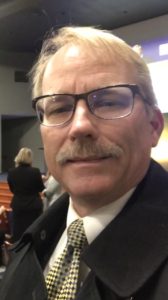California has long been known affectionately as the land of ‘fruits and nuts.’ The recent abandonment of common hygiene and sanitary devolution through human defecation on the city streets at will without chastisement in major cities in California may garner a different moniker.
Of recent date California has become a “public toilet” and now, according to public health sources, there is evidence that leprosy is on the rise in Los Angeles County. Fact is, Los Angeles may be creating the perfect environment for “ancient” diseases like leprosy to flourish.
Over the past several years leprosy has been reported in a Riverside Public School which prompted parents to keep their children out of school at that time. Since leprosy spreads more easily in close, unsanitary quarters. Some are asking is “LA on the way to becoming a leper colony?”

NBC affiliate channel 4 in Los Angeles has highlighted the growing filth concern in the city.
Professor of medicine at NYU Langone Health, Marc K. Siegel, MD, is alerting his fellow physicians about the rise in ancient diseases like leprosy. He is alerting them of the conditions that contribute to the spread of these infections–many of which have not been seen since the Middle Ages.

Dr. Marc Siegel
In September, Siegel wrote in The Hill that it is “only a matter of time before leprosy could take hold among the homeless population in an area such as Los Angeles County, with close to 60,000 homeless people and 75% of those lacking even temporary shelter or adequate hygiene and medical treatment.” He continued that “All of those factors make a perfect cauldron for a contagious disease that is transmitted by nasal droplets and respiratory secretions with close repeated contact.”
Former President Barack Obama opened the way for the filth in the current disease ridden state when he changed US law in 2016 allowing immigrants with “blistering STDs and leprosy to migrate” to the US as well as the establishment of “sanctuary cities.” It was reported at the time that leprosy and other communicable diseases would not be a big threat to the United States. This included 50,000 cases of those diagnosed with HIV infection.
Even at the time the Obama administration’s Department of Health and Human Services (HHS) stated it did not believe that the costs to taxpayers to handle the immigrants with STD’s would be significant at “less than $100 million a year.”
All this has turned out to be another lie of the past administration. Obama’s own Health and Human Services department said at that time ‘this guarantees more infections in the United States.’
Leprosy, also known as Hansen’s disease, is rarely seen in the United States, but cases continue to emerge in Los Angeles County, a new report says.
“Hansen’s disease still exists, and we need to educate medical students and physicians,” coauthor Dr. Maria Teresa Ochoa from Keck Medical Center of the University of Southern California, Los Angeles, told Reuters Health by email.
Dr. Ochoa and colleagues identified 187 patients with the disease in a review of medical records from their leprosy clinic spanning 1973 to 2018. Most patients were Latino, originating from Mexico, and they experienced a median delay in diagnosis of more than three years, the team reports JAMA Dermatology, online August 7.
Multi-bacillary leprosy (MB) cases outnumbered paucibacillary leprosy (PB) cases by nearly eight to one (88.6% vs. 11.4%, respectively), and Latino patients were more likely than non-Latino patients to have MB, as were patients from Central or South America (versus other regions).
Most patients (80.7%) received multi-drug therapy, and most (92.6%) received antibiotics for more than two years, especially if they had MB.
Only about half of patients (56.7%) had World Health Organization (WHO) grade 0 disability (no signs or symptoms suggestive of leprosy or disability) at the one-year follow-up, whereas 16.0% had grade 1 disability (loss of protective sensation) and 26.2% had grade 2 disability (visible deformity) at the last follow-up.
Among the patients who lost protective sensation, 87.7% (50/57) did not regain it following therapy.
Leprosy is believed to be one of the oldest diseases on record. The Bible speaks of and describes leprosy as far back as Leviticus chapter 13, written around 1400 -1440 BC. Medical data also reveal that leprosy was prevalent in India as long ago as 2000 BC.
Leprosy is a chronic, progressive bacterial infection. It primarily affects the nerves 
More than half of leprosy cases reported in the United States were found in California, Florida, Louisiana, Massachusetts, New York, and Texas. The majority of cases involved people emigrating from 3rd world and developing countries.
The World Health Organization (WHO) reported that a total of 208,619 new cases of leprosy were reported in 2018 from 127 countries. This is down from 211,009 new cases in 2017. Brazil, India and Indonesia accounted for 79.6% of all the new cases detected globally.
India has the highest rate and burden of the disease. The WHO reported a 
Around 90 percent of people affected by the disease in the US are immigrants from countries where leprosy is endemic. Typically, there are 200 to 250 cases reported in the US each year, with about 175 cases diagnosed for the first time.
According to MedScape, the “incubation period of leprosy is long, ranging from a few months to 20-50 years.” The symptoms of leprosy may take as long as 20 years to come to the surface and online medical report says further that “mean 
What makes the treatment of this disease far more challenging and critical is that its bacteria multiply at a very slow pace. It is known to be transmitted via close contacts such from nose, mouth etc. The disease, if left untreated, can cause severe damage to the body parts like skin, eyes, extremities such as fingers and toes, nerves etc.
Potential complications of leprosy include:
- disfigurement
- hair loss, particularly on the eyebrows and eyelashes
- muscle weakness
- permanent nerve damage in the arms and legs
- inability to use the hands and feet
- chronic nasal congestion, nosebleeds, and collapse of the nasal septum
- iritis (inflammation of the iris of the eye), glaucoma (an eye disease that causes damage to the optic nerve), and blindness
- erectile dysfunction and infertility
- kidney failure
In 2011, the New England Journal of Medicine reported the nine-banded armadillo 
Could leprosy spread to SC? With immigration from third world and developing countries there is a chance of an outbreak in SC according to WHO. The best means of preventing leprosy is to avoid long-term, close contact with an untreated, infected person.
The American Leprosy Missions organization exists in South Carolina to assist those with leprosy.
Michael Reed is Editor of The Standard, a pastor, businessman and conference speaker.




 RSS - Posts
RSS - Posts